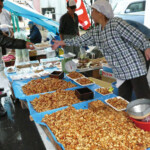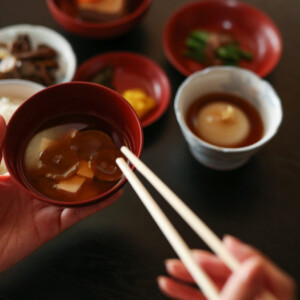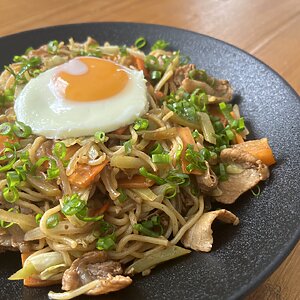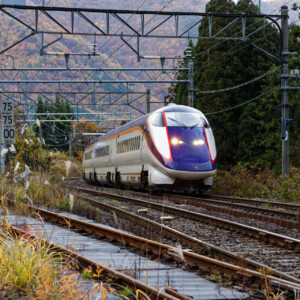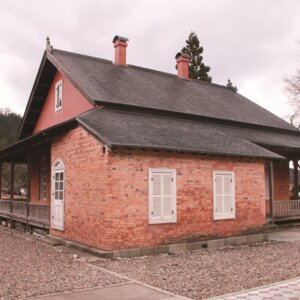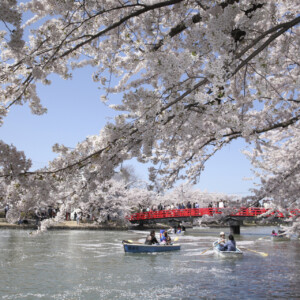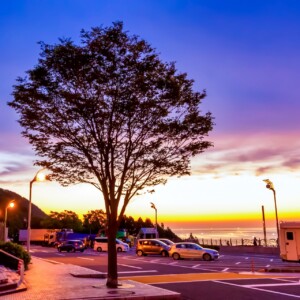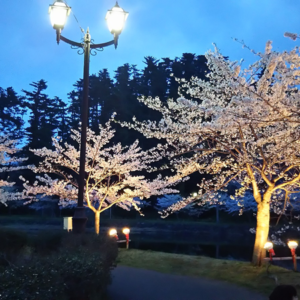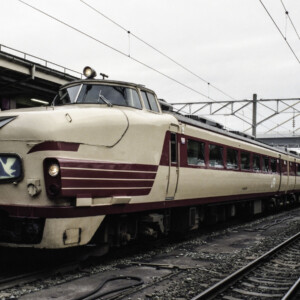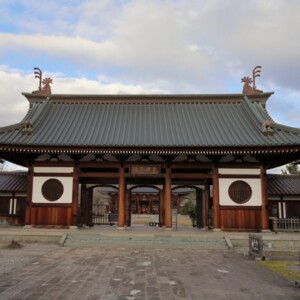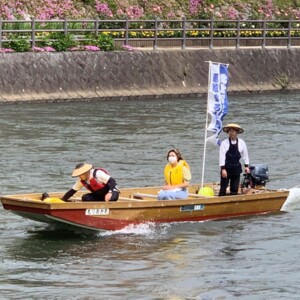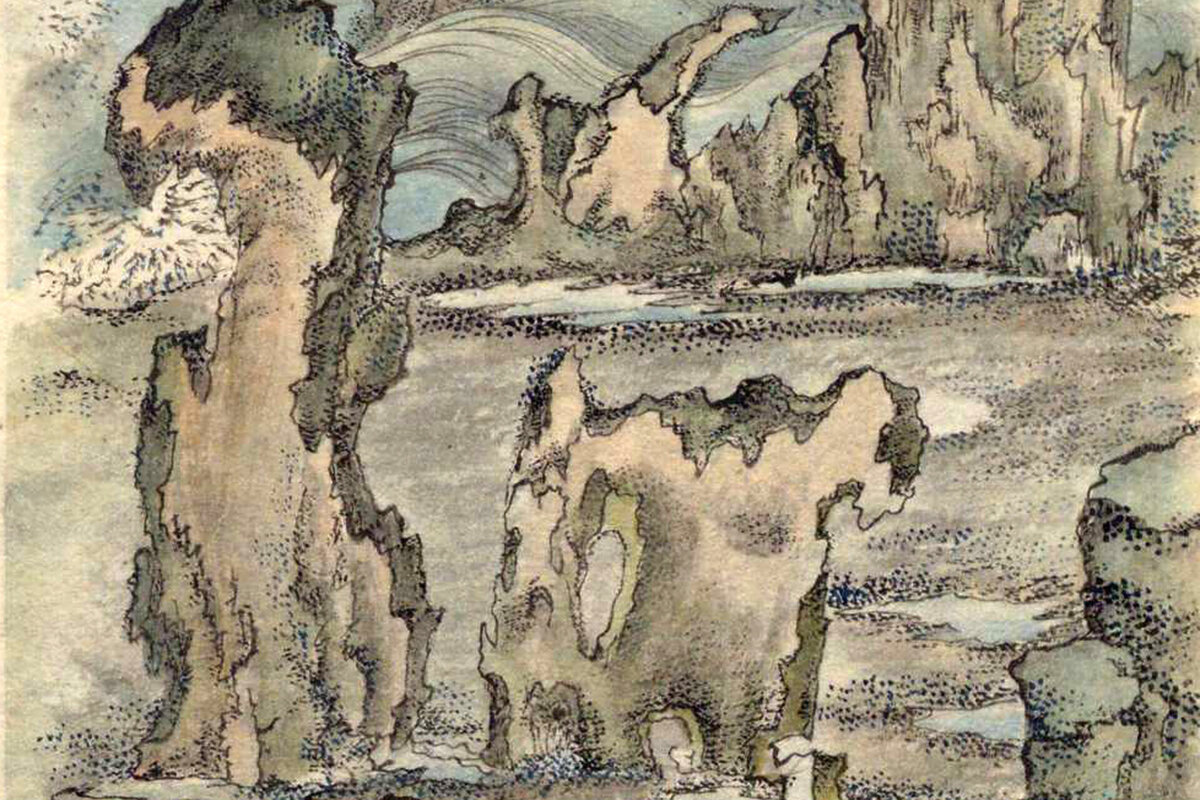
[First] Sugae Masumi walked in Oga Peninsula - Sankaze Mountain and the Head Mountains of Faith [Akita Prefecture]
table of contents
- 1 Masumi Sugae left five books of Oga Peninsula travelogues called ``The Five Winds of Oga.''
- 2 ``Oga Autumn Breeze'' walking along the southern coast and inland of the Oga Peninsula
- 3 Visit the "Oni no Hidden Village" and "Shintama no Pond" on Mt. Kankaze
- 4 Legend has it that a large snake lives there, where a woman threw herself into the pond long ago [Shintama no Ike]
- 5 From Wakimoto to Shiosezaki and in front of the gate of Akagami Shrine
- 6 Visit Nishikaji Temple (Akagami Shrine) and think about the legends from ancient times
- 7 Visit the famous spots at the foot of Mt. Kanpū and continue your journey from Oga to Noshiro.
- 8 On the Oga Peninsula where Masumi Sugae walked, there are 90 marker posts and information boards set up to help you take a stroll.
- 9 Link: Retracing the Oga Peninsula that Masumi Sugae walked (3 times in total)
Masumi (1754-1829). He was a traveler from the Edo period, and traveled mainly to northern Japan and Hokkaido, and wrote down his scenery, people's lives, and customs along with colored illustrations (illustrations).
He joined Akita at the age of 48, and until his death at the age of 76 he traveled around Akita and left behind his books. He is also known as the first folklorist in Japan, and Suke Masumi Journey which was placed at school, Meitokukan , has been designated as an Important Cultural Property of the National Association.
Masumi Sugae left five books of Oga Peninsula travelogues called ``The Five Winds of Oga.''
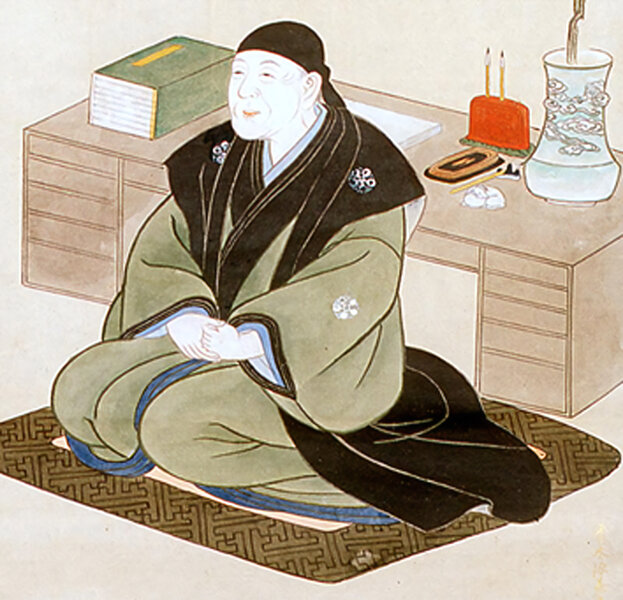
Masumi Sugae set foot on the Oga Peninsula in 1804. We headed north from Kubota Castle (Akita City) and first visited the southern coast of the Oga Peninsula, Mt. Kanpuzan, and Hachirogata (Ogata Village), then headed toward Noshiro (Noshiro City). The experience is summarized as Autumn Wind of Oga
Masumi, who loved the Oga Peninsula so much, visited again in 1810. The travelogues at that time were compiled into four volumes Oga's Spring Wind ," " Oga's Cool Wind ," " Oga's Shimakaze ," and " Oga's Cold Wind
These five books, including "Oga's Spring Wind," "Oga's Cool Wind," "Oga's Island Wind," and "Oga's Cold Wind," and the first "Oga 's Autumn Wind," are called "Oga's Five Winds ," and are extremely valuable materials for learning about the Oga Peninsula during the Edo period.
Here, we will follow Masumi Sugae's footsteps in Oga in three parts, following the [Five Winds of Oga]. The first is ``Oga no Autumn Wind,'' which was the first time I visited the Oga Peninsula in 1804.
"Masumi Sugae Yuranki," a nationally designated important cultural property, cannot be viewed because it is privately owned, but several manuscripts of "Masumi Sugae Yuranki" that have been transcribed in their entirety by later calligraphers remain, and are exhibited at the Akita Prefectural Museum and the National Museum. It can be viewed at the National Diet Library, National Archives of Japan, and libraries nationwide.
This article will be written with reference to manuscripts held by the Akita Prefectural Museum, the National Archives of Japan, the National Diet Library, and a modern translation published in 2000. Dates in the Edo period are the dates and times recorded by Masumi (old calendar) unless otherwise noted.
reference
- Akita Prefectural Museum Masumi Sugae Library (Manuscripts)
- National Diet Library Digital Collection Akita Series Special Collection No. 1 (Masumi Sugae Collection No. 1/Manuscript)
- National Archives Masumi Travelogue (manuscript of 1898)
- Published by Heibonsha Masumi Sugae Travelogue 5 Edited and translated by Takeshi Uchida and Tsuneichi Miyamoto Published on August 9, 2000
- *Citations from Masumi Sugae's writings are based on ``Masumi Sugae Travelogue, Heibonsha Publishing, Edited and Translated by Takeshi Uchida and Tsuneichi Miyamoto.''
``Oga Autumn Breeze'' walking along the southern coast and inland of the Oga Peninsula
On August 14th, 1804, Masumi left her accommodation at Kubota Castle Town, the castle of the Kubota Domain (Akita Domain), and stayed for one night at Tsuchizaki Minato (Tsuchizaki Port, Akita City), and on the following day, the 15th, she set off on foot to the Oga Peninsula.
Our first destination was Tenno Village (Tennomura/Tenno, Katagami City), located along Hachirogata, and we will use this as our base for a while touring the Oga Peninsula. Hachirogata was originally a lake at the base of the Oga Peninsula, and most of the lake surface has now been reclaimed, with only a portion remaining as Lake Hachiro (Ogata Village).

Visit the "Oni no Hidden Village" and "Shintama no Pond"
On August 21st, I climbed Mt. Kanpuzan (335m above sea level) and was impressed by the scenery. On the way down the mountain, we visited a place called ``Ishigura, or Hidden Village,'' where many rocks are piled up like a mountain. This place is still tourist attraction and is said to be the place where demons lived.
Kanpuzan is a volcano that was originally active from about 30,000 years ago to about 10,000 years ago, but is currently inactive and is not registered as an active volcano. [Oni no Hidden Village] was created when a mountain of lava was pushed out from underground during an eruption a long time ago, and collapsed due to its weight. There is a space, and this is said to be the home of the demon.
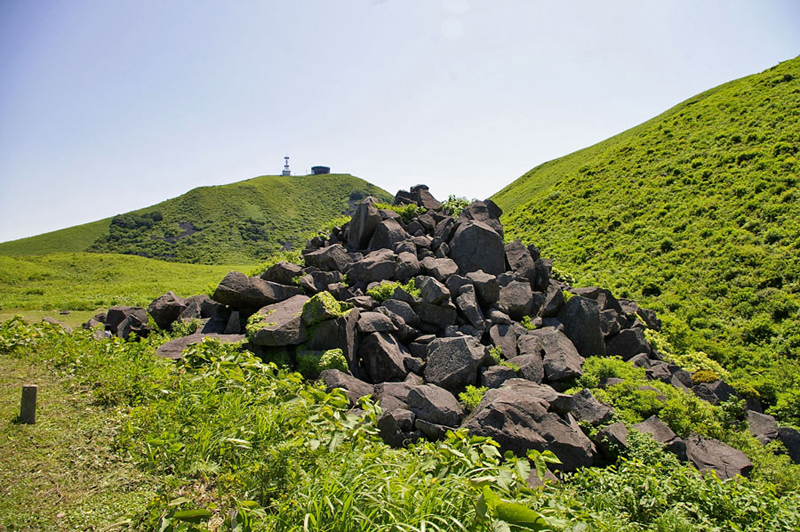
The space was also found in the Edo period, and Masumi and his group "just put their heads in and peer in," and it seems that no one entered because they were creepy.
It is written that nearby there was a stone that said, "water was piled up in a recess of a stone shaped like an inkstone called Suzurimizu," and is thought to be the inkstone stone that still praises water and is said to never wither.
INFORMATON
- Facility name: Demon's Hidden Village/Kanpuzan
- Address: 62-1 Kanpuyama, Wakimoto Tominaga, Oga City, Akita Prefecture
- Phone number: 0185-25-3055
- Kanpuzan Rotating Observation Deck/Observation Deck Restaurant
- Business period: Late March to end of November
- Closed: Open every day during business hours, from early December to mid-March
- Admission fee:
- Rotating observation deck/adults 550 yen, elementary and junior high school students 270 yen
- *The revolving restaurant can be used without admission fee.
- URL: Kanpuzan Rotating Observatory/Observatory Restaurant
- access:
- Public transportation: Approximately 20 minutes by Kanpuzan sightseeing taxi (reservation required) from JR Oga Line Oga Station
- Car: Approximately 40 minutes from Akita Expressway Showa Oga Peninsula IC
GOOGLE MAP
Legend has it that a large snake lives there, where a woman threw herself into the pond long ago [Shintama no Ike]
we stopped at Pond , which is located at the foot of Mt. Kanpū and is said to be where a person named Tamahime threw herself down in the past

Shintama no Ike is still known as a viewpoint of Mt. Kankaze, but the legend that is passed down to this day is a little different from the story Masumi heard.
According to " Oga's Old Story it appears that a girl named Otama, who was approached by the village headman, threw herself into the pond and turned into a giant snake in order to escape from the village headman There is another legend of the New Tama no Pond. The original Tamano Pond was located in the crater of Mt. Kankaze, but the water had died down, so the giant snake that lived there moved to the pond at the foot of the mountain.
INFORMATON
- Facility name: Shintama Pond
- Location: Oga Nakatakigawa Kanpuzan Yokodori, Oga City, Akita Prefecture
- Phone number: 0185-24-4700 (Oga City Tourism Association)
- access:
- Public transportation: Approximately 8 minutes by taxi from Hadachi Station on the JR Oga Line, approximately 1 hour on foot from Sky Park Kanpuzan Observation Deck
- Car: Approximately 35 minutes from Akita Expressway Showa Oga Peninsula IC
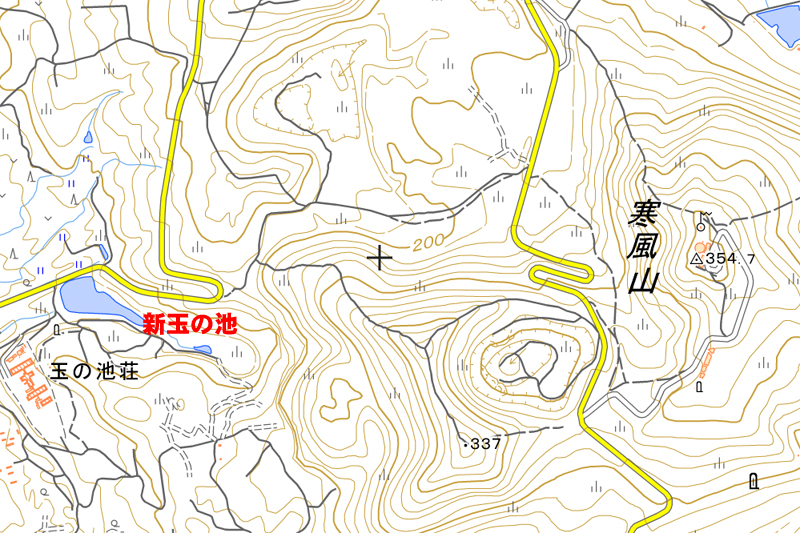
From Wakimoto to Shiosezaki and in front of the gate of Akagami Shrine
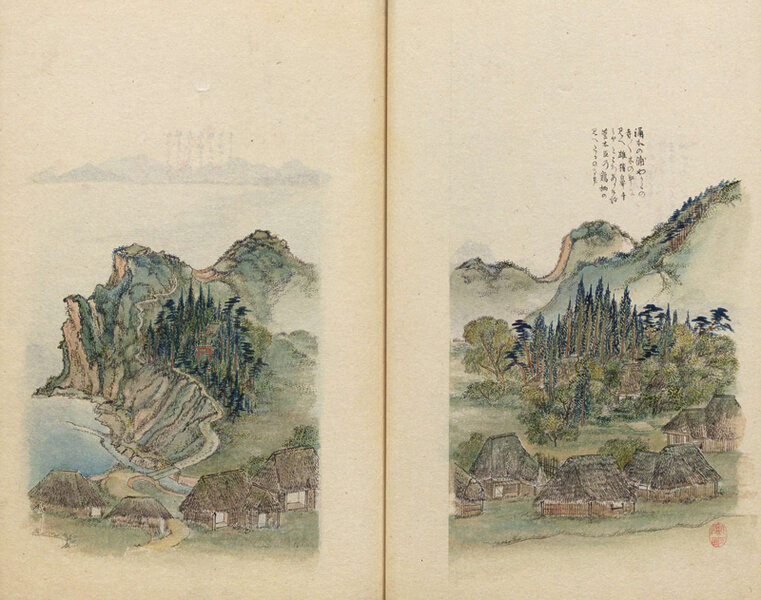
On August 24th, Wakimoto (Wakimoto Wakimoto, Oga City) by the sea, and visited the medieval castle ( Wakimoto Castle Ruins Oibanasaki
From Ikuhanazaki, I was able to see Mt. Chokai, Tobishima (Sata City, Yamagata Prefecture), and Mt. Taihei (Taiheizan, Akita City, Akita Prefecture), which is the name of Ohei Castle, and I was captivated by the view.
The next day, we moved west along the coast, passing through Funagawa (Funagawa Port, Oga City), Onagawa no Ura, where camellias grow We will arrive at the southernmost port, Obamaanoura
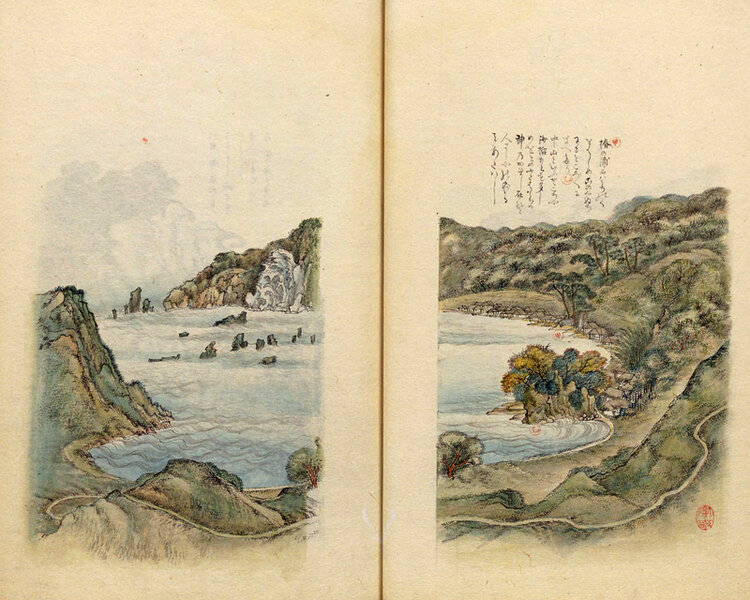
Many camellias still bloom in Funagawa Port Camellia, and the camellias blooming in the Notozan area near the port are considered to be the northern limit of wild-growing in Japan and have been designated as a national natural monument.

The weather was bad in Obama, so we finally went out around noon on August 27th, and saw the strangely shaped rocks at Shiosezaki. When Masumi saw Shiosezaki for the first time, he described the strangely shaped rock formations as ``a sight that cannot be described in words or description,'' with ``the view of Cape Shiose that was just astounding.''
Visit Nishikaji Temple (Akagami Shrine) and think about the legends from ancient times
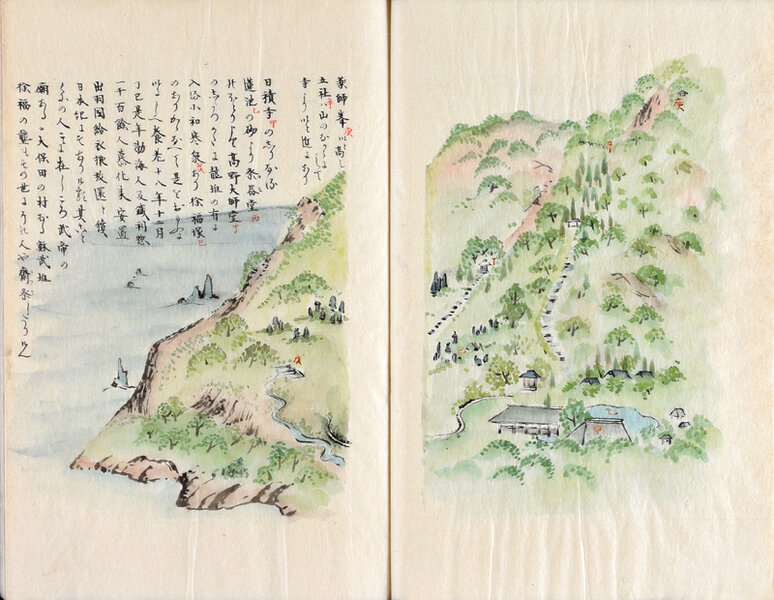
Masumi arrives at Monzen, Funagawa Port, Oga City, and visits Nishakuji Temple located halfway up the main mountain
As Masumi also wrote, Nisshuji Temple is a historic temple that conveys the legend of Emperor Wu from Han (an ancient Chinese country) and five bats (the legend of Akagami).
During the Heian period, it flourished as the center of mountain training on the Oga Peninsula, carrying many branch temples (the temples and shrines and lodgings attached to the head temple), but in the Edo period, it was very lonely, as it said, "Now, Kichijoin and Chorakuji Temple remain."
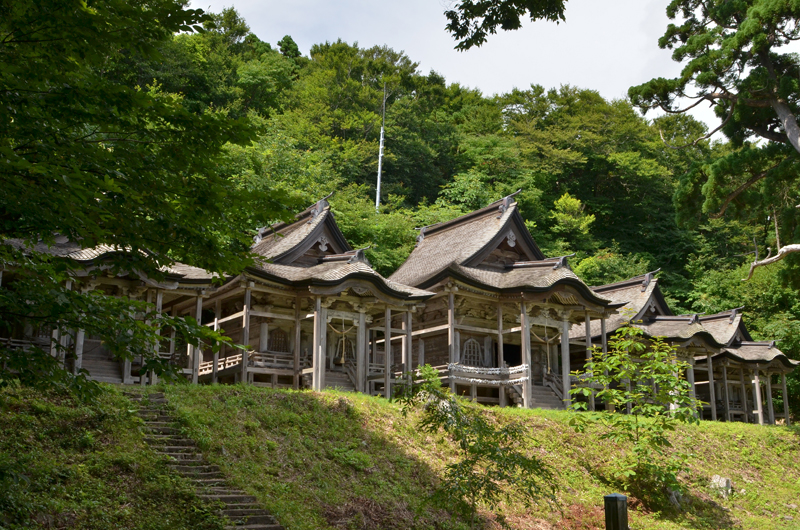
Hizakuji Temple was abandoned in the Meiji period, but Akagami Shrine , including the Goshado (Nationally Designated Important Cultural Property) built in the Muromachi period, and 999 steps that are said to have been built by five demons in one night. The stone steps remain.
*For details on the legend of the five bats and the 999 stone steps, please refer to Demons of the Oga Peninsula - Why do Namahage use knives to punish people? - Is it true that Namahage are gods? Please.
INFORMATON
- Facility name: Akagami Shrine, Goshado, 999 stone steps
- Location: 35 Harakawa (Akagami Shrine), Funagawa Port Honzanmonzen, Oga City, Akita Prefecture
- Phone number: 0185-24-9220 (Oga City Tourism, Culture and Sports Department, Tourism Division)
- access:
- Public transportation: From Oga Station on the JR Oga Line, take the Oga City Bus Oga Minami Line and get off at Monzen Parking Lot bus stop.
- Car: Approximately 40 minutes from Akita Expressway Showa Oga Peninsula IC
GOOGLE MAP
Visit the famous spots at the foot of Mt. Kanpū and continue your journey from Oga to Noshiro.
After Masumi finished visiting Nishikaku-ji Temple, he returned the way he had come and visited several villages, arriving at Tenno Village, the base of his Oga travelogue, on August 30th. After staying for a while, on September 4th, we set out along Hachirogata towards Noshiro.
On September 6th, a spring called Takino-kashira, where clear water flows out from between rocks, is located on the Shibikawa River (Goriai Magawa River , Oga City) at the base of the Oga Peninsula. I'm observing the group.
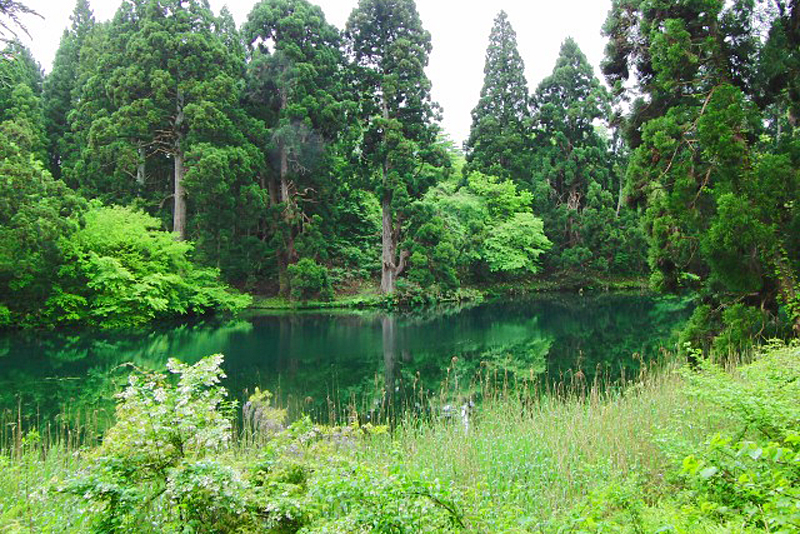
The area around the head of the waterfall is the tip of lava that flowed from Mt. Kanpu, and even today, a lot of fresh water still flows out from between the rocks. Among the springs, Taki-no-Kashira is the largest and forms a pond. The spring water is still used as drinking water and agricultural water in Oga City, and is carefully protected.
INFORMATON
- Facility name: Taki no Kashira
- Location: 34 Goriamagawa, Oga City, Akita Prefecture (Oga City Takinokashira Water Purification Plant)
- Phone number: 0185-46-4105
- Visiting hours: 10:00-15:00
- Regular holidays: Open all year round
- access:
- Public transportation: Approximately 20 minutes by taxi from JR Oga Line Oga Station
- Car: Approximately 30 minutes from Akita Expressway Showa Oga Peninsula IC
GOOGLE MAP
On the Oga Peninsula where Masumi Sugae walked, there are 90 marker posts and information boards set up to help you take a stroll.
The path that Masumi Sugae walked on the Oga Peninsula has been maintained as the `` Masumi Sugae Path ,'' and there are marker posts at 83 locations that have some connection to the path, and detailed information boards at 8 locations. Please use it as an aid when walking around the Oga Peninsula.
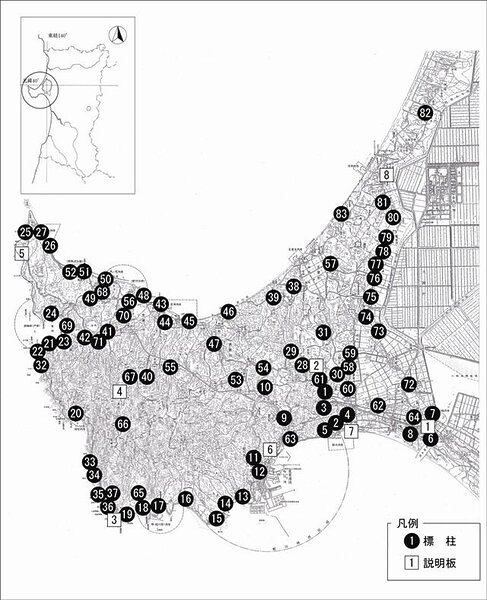
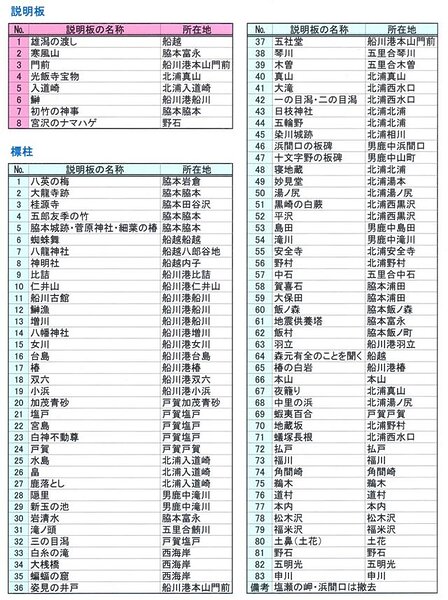


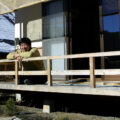




![Is Nama bald real? Traces of demons remaining throughout the Oga Peninsula - Oga Peninsula and the Legend of Demons (2) [Akita Prefecture] 1. Namahage Shiba Lighting Festival](https://jp.neft.asia/wp-content/uploads/2024/09/1076350e647a6476081bad8cd4fd6159-150x150.jpg)
![[Third] Sugae Masumi walked in the Oga Peninsula - Encountered a major earthquake [Akita Prefecture] 1. Oga's Cold Wind - Namahage Prefectural Expo](https://jp.neft.asia/wp-content/uploads/2024/10/7154afaf7fcdc00890442af025f9b4d1-150x150.jpg)
![[Second Edition] Suga Masumi walked in Oga Peninsula - Interested in the strange rocks along the coast [Akita Prefecture] 1. Oga no Shimakaze-891-1. A copy of the Akita Prefectural Museum](https://jp.neft.asia/wp-content/uploads/2024/10/8dafd7ea0a7bd28f76a6f059db39c9de-150x150.jpg)
![[Akita Prefecture, Oga Peninsula] Strange rocks on the west coast where ancient legends are passed down Rocky landscape of the west coast of Oga Peninsula ©Oganavi](https://jp.neft.asia/wp-content/uploads/2024/04/8764aeda3bb4db1829041fa671d1b72d-150x150.jpg)
![[Koriyama City, Fukushima Prefecture] Space Park's planetarium is certified by Guinness! Enjoy the world's tallest space theater starry sky and children](https://jp.neft.asia/wp-content/uploads/2018/03/dffa2e7b1a9ce8ec5e557f31f5957d83_s-150x150.jpg)
![[The Mystery of Kamakura] Are Kamakura, a winter feature of Akita Prefecture, connected to the Kamakura Shogunate? Yokote 4_Travel Tohoku 1000](https://jp.neft.asia/wp-content/uploads/2025/08/a2674c8c7497fa159899e9b2a761c38f-150x150.jpg)
![Akita Cedar, which has been close to people's lives since ancient times, is a close look at the reasons and secrets [Akita Prefecture] Ninfu Mizusawa Cedar Rare Population Protection Forest (Noshiro City, Akita Prefecture)_Travel Tohoku](https://jp.neft.asia/wp-content/uploads/2025/05/792bcbe7d9fd514753f4deeaca3de33f-150x150.jpg)
